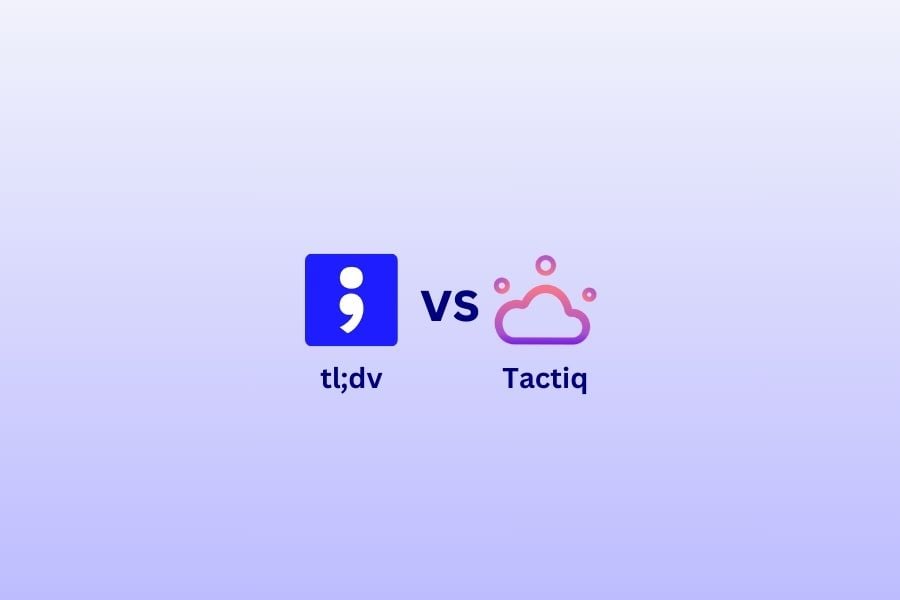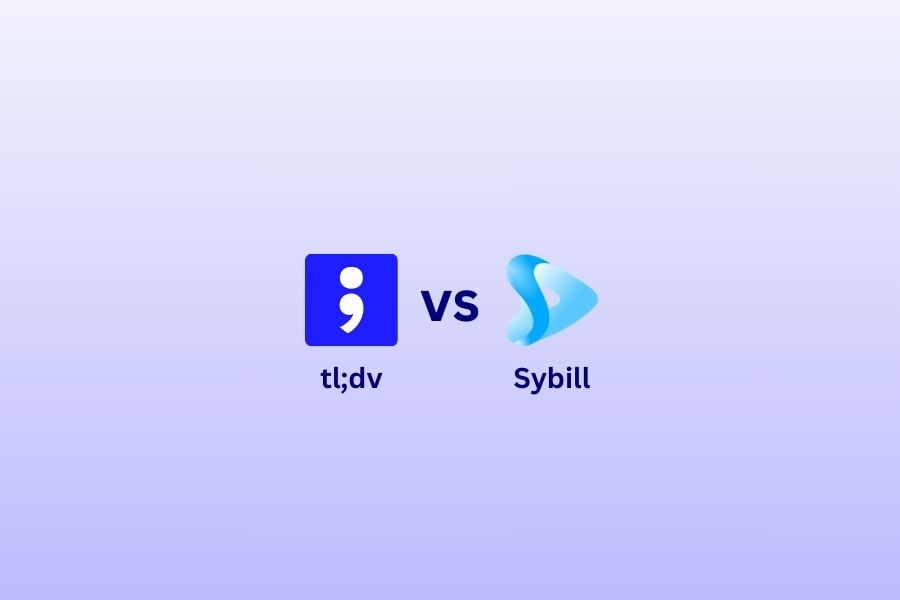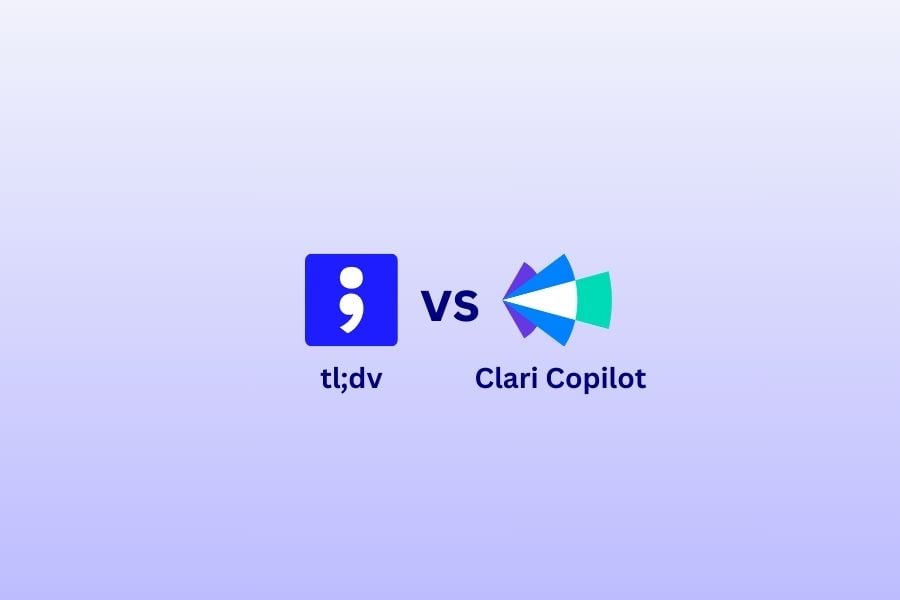In today’s rapidly evolving sales landscape, many salespeople will eagerly proclaim that the pinnacle of their role revolves around “delighting customers” or “finding tailor-made solutions for individuals.” These sentiments, while noble, don’t paint the complete picture.
Deep down, another voice lingers, urging them to remember the business’s bottom line.
@tldv.io Honesty is always the best policy #productmanagement #developer #customerccess #sales #tech #startup #corporatehumor #aitools
♬ original sound - tldv.io - AI Meeting Recorder
In the modern corporate world, despite the surge of phrases like “we are a family” and the emphasis on “rich company culture,” we cannot escape the reality that businesses exist to make a profit. These businesses may be suffused with altruistic aspirations, but revenue remains a crucial component. They’re in it to sustain, grow, and innovate.
Sales teams find themselves in this delicate balancing act. They have to ensure products and services – be it essential tools or whimsical items like fluffy dice and fairy stickers – reach those who genuinely need or desire them. At the same time, they’re under the pressure of meeting quotas, achieving targets, and in many cases, ensuring job security. This begs the question: how can this exist without compromising ethical boundaries?
Bridging the Sales Ethic Gap with Customer-Centricity

While salespeople often feel the tension between their commitment to delight customers and meeting business targets, customer-centricity offers a solution. It allows sales teams to align with the customer’s journey, truly understanding their unique needs and values. This focus not only establishes trust but shifts the perspective: sales become the natural outcome of genuine, value-driven relationships rather than an end in themselves. In this framework, achieving sales goals and prioritizing the customer aren’t opposing forces but harmoniously interconnected objectives.
What is Customer-Centricity?
When we talk about customer-centricity, we’re not just discussing a simple plan. It’s a big change in how companies think about, create, and market their products.
In the past, companies would make a product and then try hard to find people who wanted it. Often, they’d spend a lot of time convincing people why they should buy it.
But with a customer-centric approach, things change. Companies first try to understand who their customers are, what problems they face, what they want in life, and what makes them unique. With this knowledge, they create products or services that match these needs closely. This way, the product fits the customer’s life better, and it also creates a stronger connection between the customer and the company.
It’s crucial for companies to truly understand and care about what their customers need. Using tools, like checking how customers react and respond, helps businesses improve their products based on what people really think.
The Real Benefits of a Customer-Centric Approach in Sales
By focusing deeply on being customer-centric, businesses set themselves up for lasting success. When you consistently give value and show you understand your customer’s world, you build trust. This trust means customers will stick around for a long time.
Selling also changes. It’s not just about making a quick sale anymore; it’s about building a relationship that lasts. When a sales team really gets what customers need, two things happen: they do better in their jobs, and customers are happier.
In our world today, where everyone is connected online, a happy customer can be a huge help to a business. They can recommend the business to others, leading to more sales without the company having to do extra work. This powerful effect is sometimes called “The Multiplier Effect.“
So, customer-centricity isn’t just a buzzword; it’s at the heart of how successful businesses work now. Every sale is about more than money; it’s about growing a relationship that benefits both sides.
And remember, nowadays, a lot of sales happen over things like video calls. Without being in the same room, salespeople need to be even better at understanding and meeting customer needs. Every chat should offer real value and show the customer that they come first.
A Practical Guide Improving Sales Through Understanding

Ah, the wonderful world of sales – it’s an art, a science, and a dash of intuition all rolled into one. Yet, in this age of customer-centricity, understanding your client’s needs goes far beyond just intuition. Let’s take a dive into how we can truly harness the power of understanding to not just make a sale, but create a memorable experience.
Make Sure To Analyze Your Sales Calls
Remember that call last Tuesday where Jane from Accounting felt you were more of a conversationalist than a salesperson? There’s gold in that feedback. Regularly analyzing sales calls can give you tremendous insights. Over time, patterns will emerge: Are clients frequently asking the same questions? Are they often having similar concerns? These patterns are your roadmap to becoming more customer-centric. For instance, if a majority of customers are concerned about the same product feature, you’ve got a clue on where to focus next. Each call is an opportunity, not just for a sale, but for understanding what your customers really want.
Developing Strategies to Improve Sales Team Performance
Let’s face it, when your sales team shines, so does the business. But how do we ensure they’re not just hitting numbers but truly understanding and connecting with the customers? Focus on tailored strategies. Perhaps it’s a weekly brainstorming session where you all share feedback and insights, or maybe it’s investing in tools that give your team real-time customer data. By emphasizing the need to improve sales team performance in a customer-centric manner, you create an environment where the customer’s needs are at the heart of every strategy.
Training Techniques: Aligning Sales Methods with Customer Values
Customers today don’t just buy products; they buy values, stories, and connections. Training your team to align their selling techniques with what the customer values is akin to giving them a magic potion. Dive deep into what your target audience cherishes. Maybe it’s sustainability, or perhaps it’s innovation. Once you’ve figured that out, train your team to emphasize these values. By doing so, you aren’t selling a product, but a vision and a value.
When to Push for a Sale and When to Move On
Let’s spill some tea: pushing for a sale is so 2010. Customers can sense desperation a mile away, and there’s nothing that turns them off faster. If a customer feels valued and understood, they’ll be more inclined to make a purchase. But, if they’re not biting even after you’ve laid out all the cards, maybe it’s time to graciously step back. Remember, every ‘no’ leads you closer to a ‘yes,’ but pushing too hard might close doors forever.
Cultivating a Customer-Centric Culture Across the WHOLE Business

In any rapidly-evolving industry, placing the customer at the center of your universe isn’t just a lofty goal—it’s paramount to success. Each department plays a pivotal role in breathing life into this customer-centric culture. Here’s how the different pieces of this vast puzzle come together:
Product Development
Being the creative geniuses behind the software, this team needs to remain agile, evolving the product based on customer feedback. Establishing consistent communication channels with client-facing departments can lead to continuous improvement. Knowing the customers’ challenges can spark innovations and features that set the product apart.
Marketing
It’s more than just selling a product; it’s about understanding and communicating its tangible value. Just like sales, marketing campaigns should be anchored in the real-life challenges and aspirations of users, capitalizing on genuine testimonials and case studies.
Customer Success
As the frontline warriors of customer interactions, this team gathers priceless insights. Creating a structured feedback loop with other departments can be transformative. Their finger-on-the-pulse approach can preemptively address issues before they escalate.
Onboarding & Training
First impressions matter. Creating an intuitive, user-centric onboarding experience is critical. Collaboration with product development ensures that common hurdles faced by new users are proactively addressed.
Analytics & Insights
Diving deep into data unveils patterns. Understanding user behavior and potential friction points within the software empowers the company to make informed product and strategy decisions.
Finance & Billing
Transparent billing and responsive answers to customer queries around pricing or payment options can significantly boost trust. Even in numbers, the customer’s ease and clarity are essential.
HR & Training
The cultural tone of a company begins here. Prioritizing hires with a customer-focused mindset and instituting training programs that continually emphasize customer centricity ensures that the ethos is deeply ingrained.
C-Level Executives
Leadership plays a crucial role in setting the tone for the entire business. Their vision and strategy should consistently emphasize the importance of the customer. By being vocal champions of customer-centricity and ensuring it’s a top-down approach, they can drive alignment across departments. Regularly communicating success stories or challenges and recognizing teams or individuals that exemplify customer-centric behaviors can further cement the culture.
Harnessing Customer-Centricity for Quality Lead Generation
Customer-centricity isn’t just a strategic move to make sales more ethical or align better with customer needs; it’s also a powerhouse tactic to generate top-quality, red-hot leads. When companies genuinely understand and address customer concerns, word-of-mouth marketing becomes a natural outcome. Customers are more likely to recommend businesses that they feel truly cater to their needs.
Building Trust
In today’s digital age, trust is currency. When companies adopt a customer-centric approach, they’re essentially saying, “We’re listening, and we’re here for you.” This cultivates trust. And trusted businesses are the ones most likely to get recommendations.
Creating Personalized Content:
A customer-centric strategy requires deep insights into customer needs and pain points. These insights can be goldmines for content creation that will have marketing weeping tears of joy. By producing content tailored to specific customer segments, companies can draw in more qualified leads who feel the content speaks directly to their needs.
Video Call Recording with tl;dv
Navigating a predominantly digital business landscape nowadays, the prominence of video calls has surged leading for plenty of customer-centric opportunities in sales calls. Recording these using tl;dv, with customer consent, is invaluable for multiple reasons:
- Training and Quality Control: Sales teams can revisit these recordings to refine their pitches, ensuring they’re truly adopting a customer-centric ethos and identifying areas for improvement.
- Transcription & AI-Generated Summaries: With tl;dv companies can benefit from automatic transcriptions and concise AI-generated summaries of video calls. This not only saves time but ensures that crucial details aren’t missed.
- Keyword Search: Gone are the days of fast-forwarding through long video recordings. With tl;dv, teams can search by keyword, enabling them to jump directly to relevant sections of a call, streamlining the review process.
- Sharing Capabilities: The platform allows easy sharing across the entire company and even with prospects. This fosters transparency and ensures all stakeholders are on the same page. It also provides *ahem* receipts for that all important voice of the customer. Prove unequivocally to X department that Customer A said this EXACT phrase. SEE! We told you!
- Timestamping: Crucial moments in the call are timestamped, making it simpler to reference or revisit specific points.
- CRM Integration: tl;dv seamlessly integrates into your CRM, ensuring that customer interactions and insights are easily accessible, aiding in strategic decision-making and fostering a customer-centric approach.
- Authentic Testimonials: With appropriate permissions, excerpts from these calls can be used as genuine testimonials. True voices of the customer. Potential clients witnessing real-time conversations and positive outcomes can be instrumental in building trust.
Customer-Centric Tastiness
And there you have it, a feast of insights to whet your customer-centric appetite. But what if I told you that a spoonful of tl;dv could supercharge this already scrumptious meal?
With tl;dv, your sales teams will be gliding through customer interactions like a penguin in a tuxedo on a freshly waxed floor. Elegant, smooth, and oh-so-dapper.

At the end of the day, you want your sales team to be delighting your customers and potential customers. And being able to be fully present in the call, not worrying about hitting quotas, but instead knowing how to compose themselves to listen and engage with the client, is key.
With a customer-centric culture, you’re not only focusing on the immediate sale, but you’re building relationships that could last a lifetime, or at least until the next big thing in fluffy dice technology comes along. By showing that your company genuinely cares about the customer’s needs and is willing to put in the time and effort to truly understand them, you’re playing the long game.
This is something we wholeheartedly believe in here at tl;dv. So much so that we offer our basic tier completely free of charge. We’re so confident that you’ll love our own customer-centric approach, you’ll be customers of ours for years to come. So why not download and try it for free today? Go on, give it a click and we’ll adjust our penguin bow ties in the meantime.







